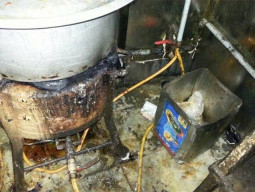
According Dr Faiz Y Bhora, the numbers are bound to have increased by at least 10 folds in the past 15 years. Delivering a lecture as a visiting alumnus on ‘Thoracic Surgery Innovations: From Robotics to Bioengineering’ at the Aga Khan University, Dr Bhora revealed how lethal lung cancer can be. “It is the most dangerous form of cancer and kills more people than the next four most dangerous cancers combined.”

And the longer it goes undetected, the more dangerous it becomes. The 5-year survival chances of lung cancer patients are as high as 90 per cent if detected in its early stages. At stage 4, they decrease to less than 5 per cent.
It is therefore vital to detect lung cancer at its earliest stages. This is where improvement in technology in the past decade played a vital role. Traditional methods tended to be more invasive and had side effects, some as drastic as broken ribs.
However, Robotic Thoracic Surgery means that the fight against lung cancer is now much easier than what it once was. “Robotic Thoracic Surgery is less painful, less bloody and easier to recover from and also causes less stress on the body as compared to traditional methods,” revealed Dr Bhora, before also highlighting its disadvantages, few as they were. “This technology is expensive and there is a steep learning curve.”
Dr Bhora then went on to show a couple of clips where robots, controlled by robotic arms performed various surgical procedures. He stressed that it is vital to ensure minimal bleeding when working with robotics, warning that excess blood can block the camera. “It is therefore essential to locate and address the bleeding as soon as possible,” he said.
But the benefits of bioengineering do not end there. The trachea, or the windpipe, is one of the most essential organs of the body and according to Dr Bhora, there are certain issues that even modern medicine cannot fix. This leaves doctors with the option of trying to ‘build’ a new trachea. Dr Bhora said that while research has shown that stem cells can help, the question that they set out to answer was; can it be built using 3D printing?
The idea was to use the stem cells of the patients themselves and use a specific substance called hydrogel to construct a new windpipe. At the moment, the technology is being tested on animals, with positive initial results. However, it may take more than a year before it can be tested on humans.
Dr Bhora claimed that using hydrogel and the patients’ own stem cells means that the procedure will have no side effects. However, one of the biggest problems that face the research that Dr Bhora is part of is that the hydrogel degenerates in only eight months, and what happens after that? “Then you are in trouble,” in Dr Bhora’s own words.
While tissue engineering is showing positive signs, Dr Bhora was quick to point out that the technology is not advanced enough for 3D printing of entire organs. “We cannot print an organ yet but we may be able to support it in a certain manner,” he claimed. He warned, however, that this will be limited to only a few organs, “It is still not possible to print a 3D heart valve.”
No matter how limited the technology may be and no matter how many years it may take before we can perfect it, Dr Bhora summed it perfectly when he said that it is here to stay.
Published in The Express Tribune, April 19th, 2014.

















COMMENTS
Comments are moderated and generally will be posted if they are on-topic and not abusive.
For more information, please see our Comments FAQ